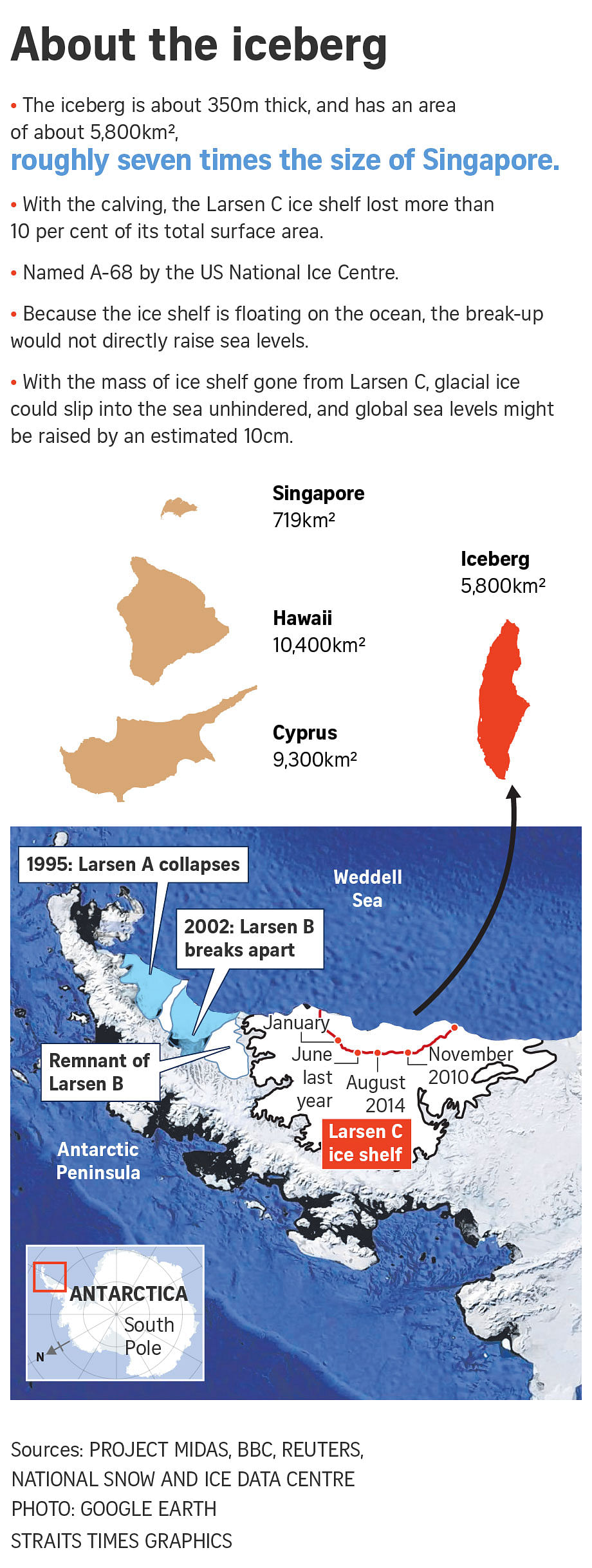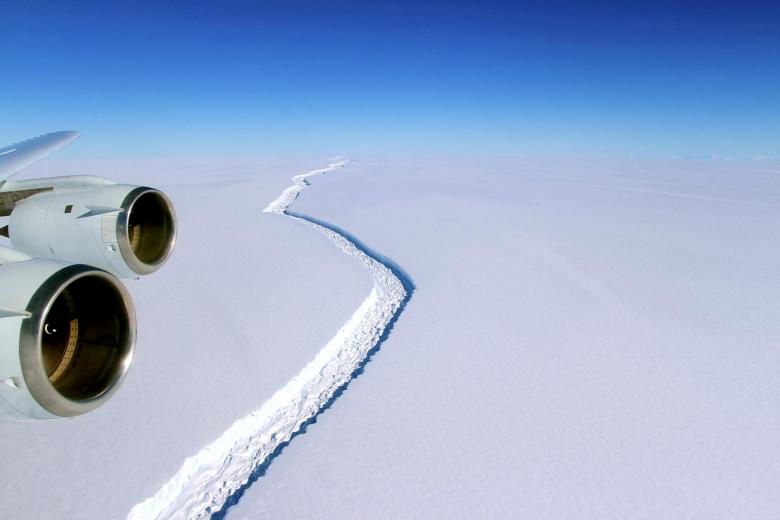ANTARCTICA - New images from a satellite tracking a giant breakaway iceberg in Antarctic waters show that in the week since it broke free, it appears to have begun drifting seaward along a predicted route - or highway.
The berg, known to scientists as A-68, should follow the highway up the eastern coast of the Antarctic Peninsula, leading from the Weddell Sea towards the Atlantic.
"It will most likely follow a northeasterly course, heading roughly for South Georgia and the South Sandwich Islands," Dr Thomas Rackow from the Alfred Wegener Institute, Helmholtz Centre for Polar and Marine Research in Bremerhaven, Germany, told BBC News.
The elongated berg is almost 5,800 sq km - about the size of Brunei - and separated from the Larsen C ice shelf between July 10 and 12 after a crack more than 190km long had developed over several years.
Scientists want to understand what effect the separation of the berg - known as calving - will have on the remaining parts of the ice shelf. Ice shelves form as long rivers of ice called glaciers flow from land into the sea. The result, like a clog in a drain pipe, slows the flow of the glaciers feeding them.
When an ice shelf collapses, the effect, according to The New York Times, is that the glaciers behind it can accelerate, as if the drain pipe had suddenly cleared.
Ten per cent of Larsen C's area was removed by the departing berg, and this loss could change the way stress is configured and managed across the shelf.
A-68, the berg produced by this process last week, is one of the largest icebergs ever recorded and provides a glimpse of how the Antarctic ice sheet might ultimately start to fall apart. Similar shelves are holding back enormous amounts of ice and scientists fear that their future collapse could dump enough ice into the ocean to raise the sea level by many metres.
It is difficult to get pictures of the Antarctic currently because of the long winter nights and because of cloud cover, said the BBC.

Spacecraft monitoring A-68 are relying on radar or on infrared sensors.
One image from the Spanish-owned Deimos 1 satellite released on July 14 appears to show a large segment of "fast ice" that was attached to the berg has broken free. It is much thinner than the main block - only a few metres thick compared with the 200m or more of the berg itself.
The BBC said future investigations of the sea floor uncovered when the berg moves away from the Larsen C shelf offers the possibility of discovery of new species.
The breakaway of A-68 has fundamentally changed the landscape of the Antarctic Peninsula, according to Project Midas, a research team from Swansea University and Aberystwyth University in Wales that has been monitoring the rift since 2014.
"The remaining shelf will be at its smallest ever known size," Mr Adrian Luckman, a lead researcher for Project Midas told The New York Times. "This is a big change. Maps will need to be redrawn."



